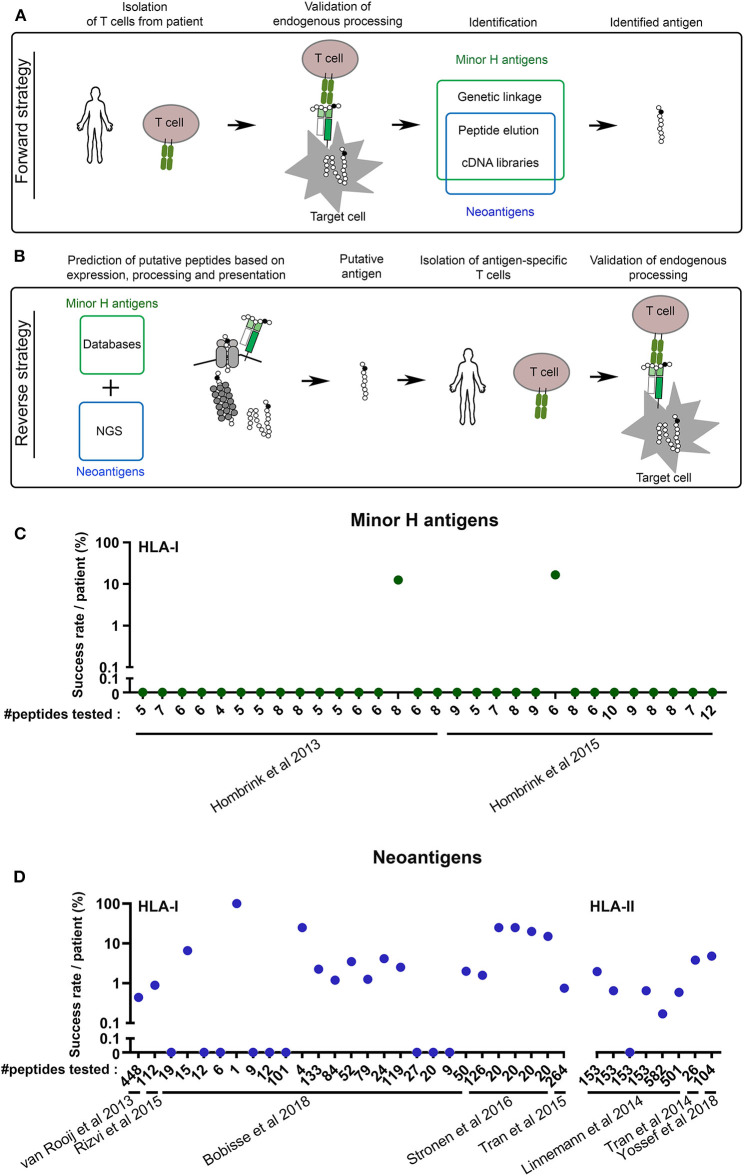Figure 1.
The reverse antigen identification strategy still requires major improvement. (A) Schematic overview of the forward antigen identification strategy. (B) Schematic overview of the reverse antigen identification strategy. The cartoons depict processing by the proteasome, TAP transporter and HLA class I. NGS, Next Generation Sequencing. (C,D) The success rate of the reverse immunology approach is low. (C) From two papers in the field of minor H antigens, data were collected about the number of potential minor H antigens that were tested (#peptides tested) vs. the percentage of peptides against which T cell reactivity was detected or raised. Only papers were selected in which reactive T cells were confirmed to recognize the endogenous (or naturally processed) antigen. (D) The same was done with eight key papers in the field of neoantigens, five on HLA-I and three on HLA-II antigens.

